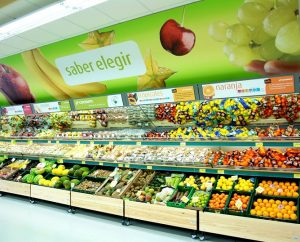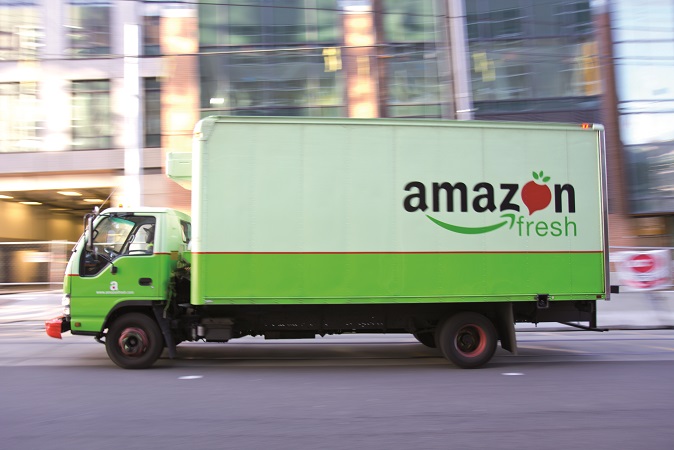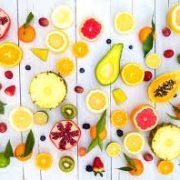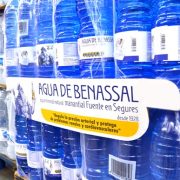Consumption and new trends in the distribution of fruits and vegetables
The distribution sector in Spain is very different from what happens in the rest of the European Union where large chains control over 90% of agri-food. Aldi, Socomo (subsidiary purchases of fruit and vegetables Carrefour), Lidl, Auchan-Alcampo, Edeka in Germany and Tesco in the United Kingdom are some of the owners of the distribution of the fresh in Europe, as is Mercadona in Spain, although not in the same proportion because the distribution is much more balanced than in the rest of European markets.
In spite of the indisputable power of the Valencian company in Spanish territory, the great wholesalers, the mercars grouped in Mercasa, still have great strength in the distribution of fruits and vegetables; the traditional greengrocers and the markets of supplies, that have a great protagonism especially in the scope of the big cities. But the tendency is that they lose weight little by little in favor of the big chains.
The available data show that distribution in Spain was shared until recently by 50% among these large groups and the rest, consisting of wholesalers, markets and specialized stores; but the progression reflects that this situation is changing and the balance is declining in favor of hypermarkets and supermarkets.
The report on food consumption in Spain 2016, prepared by the Ministry of Agriculture and Fisheries, Food and Environment shows that fresh fruits are distributed by 39% by supermarkets and hypermarkets and by 35.4% by the traditional store; the rest is done through other channels such as Mercas or markets of supplies (14.4%) or discount store by 11.3%. In relation to fresh vegetables, 36.5% is distributed in supermarkets and hypermarkets, 31.8% in the traditional store, 20.8% in other channels and 11% in discount stores. Only a few years ago the figures were the other way around, with a predominance of traditional stores.
Why does this change occur? Felipe Medina, head of the Agrifood Chain of the Spanish Association of Distributors, Supermarkets and Supermarkets (Asedas) notes that “fresh products, including fruit and vegetables, are one of the hallmarks of the supermarket of proximity and this segment brings together the characteristics that consumers appreciate of this model: variety, quality, sustainability, food safety and competitive prices very close to their homes.” Medina indicates that “when buying fruits and vegetables, the attributes that consumers value most are quality and taste. That is to say, fruits and vegetables are looked for in their exact point of maturity that take to the dish the most intense flavor “.
The report Trends of the distribution 2017, prepared by the consultancy Kantar Worldpanel based on the first eight months of this year, also reflects that the consumer sector retakes the positive evolution in a more confident environment and with the modern distribution as an engine of the recuperation. The market has grown by 0.8% in value and 0.9% in volume. The rise is widespread but especially prominent in the fresh section, which has been dragging down the market in recent years.
The report of the consultant Kantar detects another tendency in the distribution that to date was associated with the specialist channel (greengrocer) and that is moving to the large distribution. It is about the growing weight of Premium or Gourmet products, of organic or bio products and also of superfoods. On organic products, Consum is reported to have increased its offer by six and announced that in the coming months will establish categories for organic products in its online store that will facilitate its partners-customers identification and purchase of this range of items .
There is also a greater interest in the search for added value related to convenience. The demand is oriented towards the trinomial: ease of cooking-preparing-consuming, as indicated by Asedas
They continue to grow categories such as the IV Range -vegetables and fresh fruits already clean, chopped and ready for consumption- and V Gama -products already processed and prepared for immediate consumption-, such as soups, creams, full salads, etc. Plastic trays, flow pack bags, are already an essential part of the large distribution lines and make both Mercas and traditional stores have no choice but to introduce them.
“It is essential – according to the spokesman of Asedas in the Agri-Food Chain – the orientation to the price without renouncing the quality, assure increasing volumes to conserve the capacity to respond to a growing demand and assure homogenous qualities from season to season and in the different stages of each of them so as not to defraud the expectations of the consumers. To do this, suppliers are sought with sufficient size and flexibility to meet the expectations of consumers, which are changing. It is about transferring the needs of the consumer to the producers so that they can respond in an agile way to the expectations of the same and carry out a joint work based on the tendencies that are observed in the linear ones “. The own president of Mercadona, Juan Roig, said in the presentation of the results of the company corresponding to the past year that “the fruit and the vegetable that we sold five years ago was very bad and now it is outstanding or remarkable”.
On the other hand, the specialist consultant in agrifood, David del Pino, highlights another relevant fact as it is the disappearance of the consumption behavior of the middle class, which happens to be of opposite ends when looking for very cheap products on the one hand and, for the another, Premium products. A majority of consumers have stopped finding value in consumer products that are available all year round and, therefore, are oriented to buy them as cheaply as possible. Meanwhile, another part of consumers are willing to pay more, but only for those products that provide additional features or benefits, both rational and emotional as indicated by the Kantar report.
 The pressure to which the generalist chains are subjected to achieve the above has caused that the distribution oriented to high-level food, such as low-cost (hard discount), has surprised with very significant growths in full crisis. It is not surprising, therefore, that Lidl and Aldi have headed the classification of the chains that grew the most during the previous year according to the latest study by Kantar, together with the Valencian Consum.
The pressure to which the generalist chains are subjected to achieve the above has caused that the distribution oriented to high-level food, such as low-cost (hard discount), has surprised with very significant growths in full crisis. It is not surprising, therefore, that Lidl and Aldi have headed the classification of the chains that grew the most during the previous year according to the latest study by Kantar, together with the Valencian Consum.
However, the classification is still led by Mercadona with 24% of the market, followed by the DIA Group and Carrefour, tied with an 8.5% share, exactly the same as last year-, far from the Basque label Eroski, which is in fourth place with 5.8%, after recording a fall of three tenths. In the fifth place is the German Lidl chain, with 4.1% market share, five tenths better than the figure for 2015, while Alcampo closes the ranking of the six best, with 3.7%, which is a setback of one tenth. Regional supermarkets grow mainly because of their commitment to fresh local products and manufacturers’ brands.
The Mercadona leader
Mercadona is the leader, by far, of the Spanish distribution market. It continues with the decentralization of the management of fresh, which allows betting by producers in origin, boost local products and proximity, work with shorter supply channels and therefore strengthen freshness and quality. It relies on specialist suppliers to pursue the highest quality and continue to incorporate know-how into the assortment of the company, which is also increasingly adapted to local tastes.
The renovation of its establishments as other competitors have done, the introduction of healthy proposals and the commitment to exclusive brands allow it to improve its image and register the highest growth since 2012: it gains 1.2 quota points and already concentrates more than 24% of the market. Throughout this year 88% of Spanish households have ever purchased in the Valencian chain.
As a novelty, it is worth highlighting the pilot experiences that it carries out in some supermarkets in order to directly weigh fruit and vegetables in the boxes, something that Lidl is already doing.
We must also highlight its commitment to introduce the machine to squeeze freshly squeezed orange juice in its more than 1,600 establishments, with an investment of more than 20 million euros, between the development of the concept of the company of its supplier Zumex and training of the template. “Increase the sale of oranges of national origin in 150,000 kilos per day of a type that, because of its appearance, although high quality, had difficult to market,” said Juan Roig, president of Mercadona, in the presentation of the results of 2016. The sale of this orange adds to the purchases of more than 200,000 tons that Mercadona already makes for its sale in mesh or in bulk.
Trading companies
The distribution would be impossible if the trading companies did not exist. The sectorial classification of wholesale fruit and vegetable companies remains unchanged in the first three positions according to 2016 data, led by Sociedad de Compras Modernas SA-Socomo-Carrefour fruit and vegetable purchasing center-with 586,943. 381 million euros.
It is followed by the Valencian company Anecoop with 530,341,816 and in third place Arc Eurobanan S.L., with 278,171,321. The Castellón-based company Martinavarro S.L. rises to fourth place, with 235,749,691, to the detriment of Greenyard Fresh Spain Sociedad Anónima (Univeg), with 230,553,301, which falls back to the fifth. It rises two positions with respect to the last ranking and the sixth is the Almerian company Alhondiga La Unión S.A., with 221,688,030. In the seventh, after lowering a position, Sanlucar Fruit S.L. with 195.397.320, the eighth after descending also a place we find the Coop. Provincial Agricultural Livestock San Isidro, Sdad Cooperativa Andaluza, with 185,175,153. The SAT nº 1596 Nufri and the company Hermanos Fernández López S.A., with 175,648,470 and 171,235,377 million euros, respectively, remain in the ninth and tenth positions.
These companies reach a volume of turnover of more than 20,600 million euros that place them as the tenth sector in Spain that generates higher sales.
Opinion: Consumption trends in fresh fruits and vegetables
By David Del Pino Agri-food consultant.
The consumption trends of fresh fruits and vegetables are fundamentally defined by four major trends: price, health, natural and convenience. We know all the trends, but we do not know their real impact in each market. In some markets it seems clear that the price will remain the main reason for purchase, but begin to see signs of profound change in consumer behavior.
“Always low prices, lower prices, save more, more for less, every little bit counts”. These are the messages and slogans of many supermarket chains. Does anyone doubt that price is the first factor of competition between brands? Consumers are extremely sensitive to the price call. Nobody wants to pay more … unless it’s fully justified. Here comes into play the Premium product, the one by which consumers are willing to pay more and where they perceive value beyond price.
“The challenge is to know / find those attributes that give Premium value to a product”
In an aging population with low birth rates, the Health and Wellbeing trend has reached the food to stay. The tendency to launch healthy products that contain “this or that” that protect / benefit / heal / prevent you is also well known. But this trend has expanded, it is not only to be healthy but also to feel good (Well-being). The “why do you deserve it”. The fad meals, but healthy (comfort foods). Diets: low salt, fat, etc. The consumption of meals associated with spas, gyms or spas. The implications are important because multiple market niches are created.
Consumers associate the natural with the close because we think that what comes from far can not be very natural, obviously not helped by various food crises. In this way, the trend towards local products is not just an exercise in chauvinism. So ingrained is our perceptions, that in some markets the local product has begun to capture market share to the organic ones (organic). For producers who are far from the centers of consumption it is impossible to prove that they are local (impossible to discourage shopping for chauvinism), but you can work in all aspects that make it seem more natural.
Finally, everything that is convenient, that makes my life easier and saves me time is having a decisive impact on consumer purchasing decisions. As consumers, we are only very lazy hominids and that is why the tendency of the easy & convenient is so important. Everything that solves and facilitates the daily life of the consumer is important.
“A simple open-easy that does not work can sink sales. The product is very important that saves time for the consumer”
The perfect product would be the one that combines the greatest number of tendencies and attributes at the same time.
YOU MIGHT ALSO LIKE:
➡️Amazon revolutionizes distribution companies with e-commerce



















